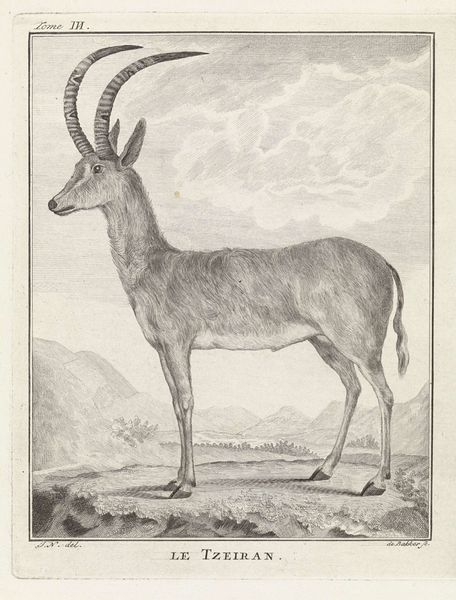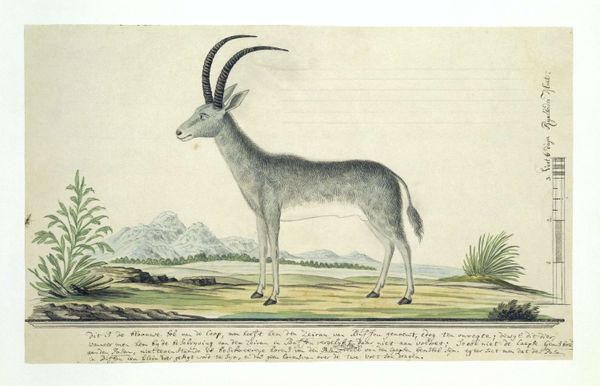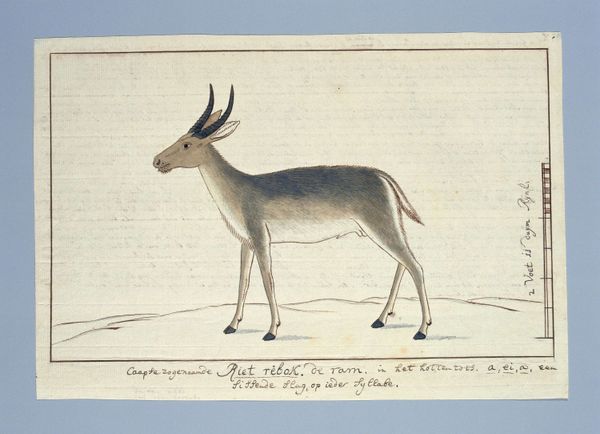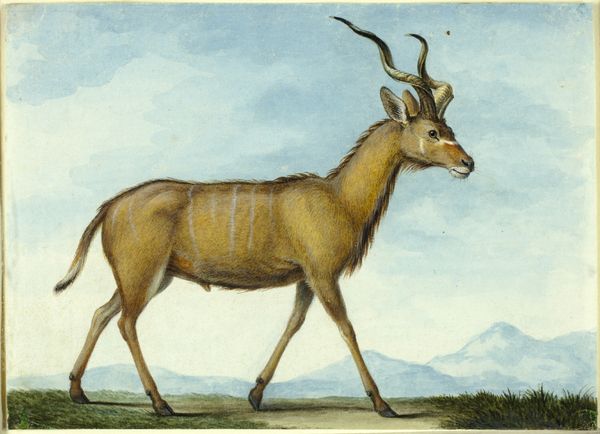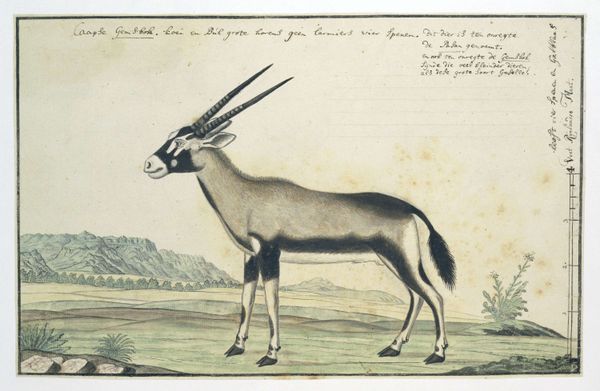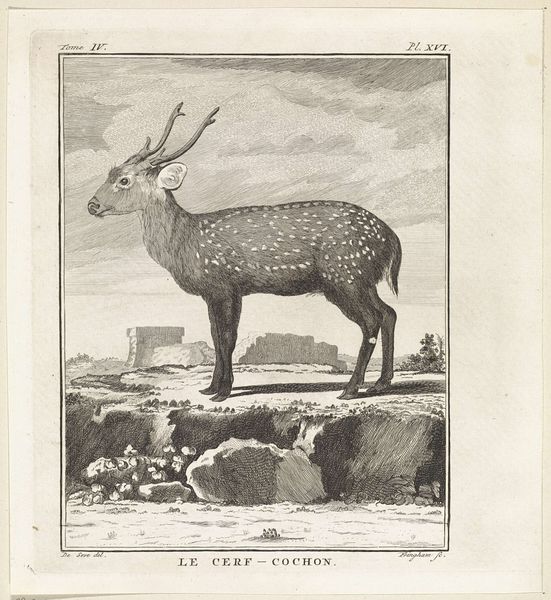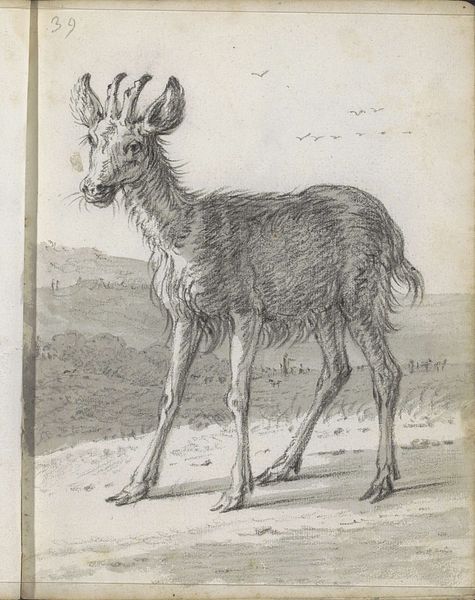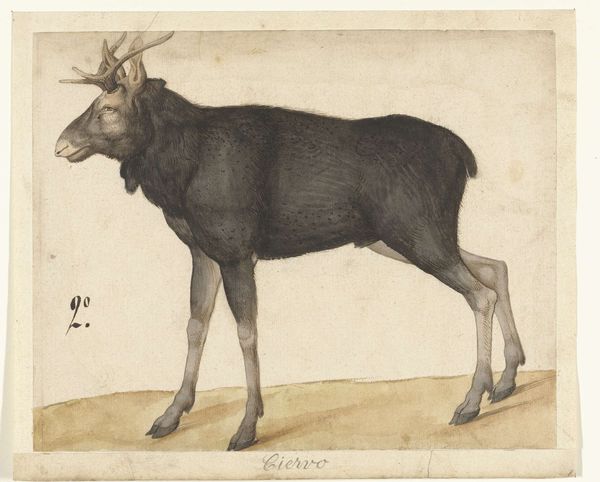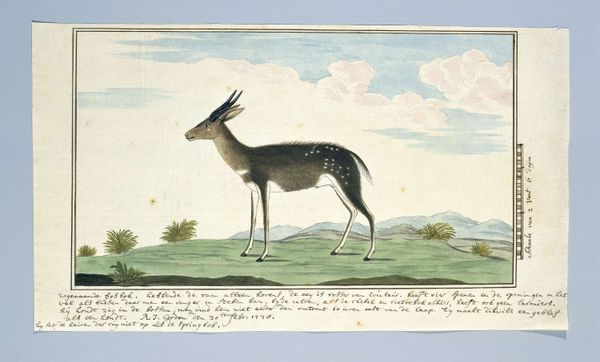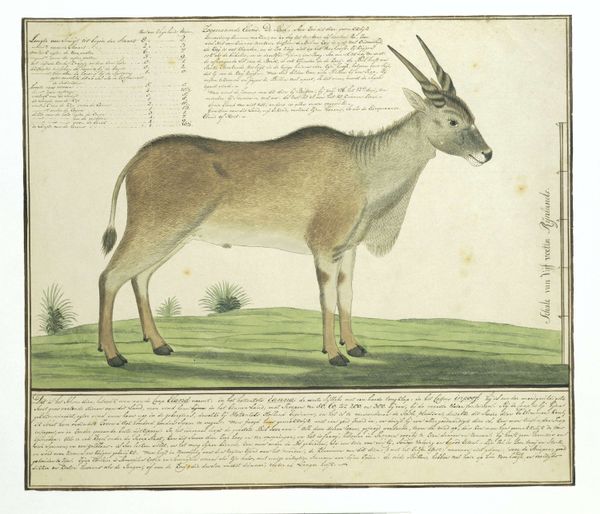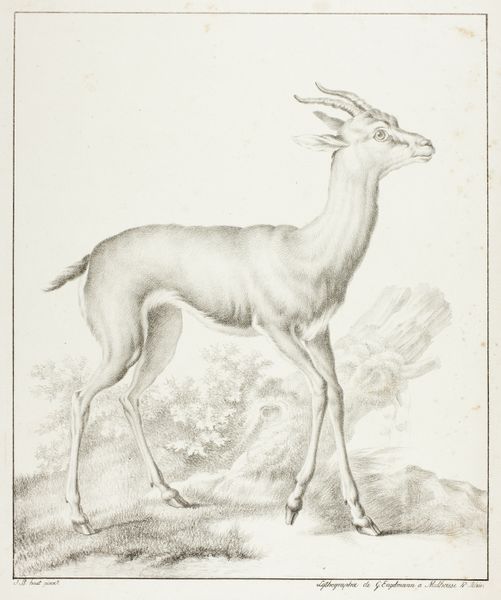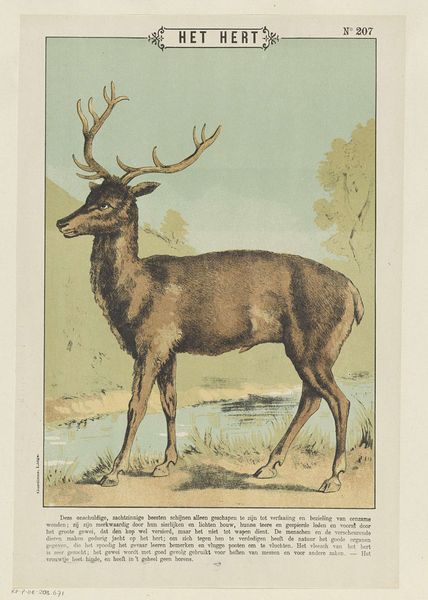
drawing, watercolor, pencil
#
drawing
#
animal
#
landscape
#
figuration
#
watercolor
#
coloured pencil
#
pencil
#
realism
Dimensions: height 660 mm, width 480 mm, height 359 mm, width 265 mm, height 325 mm, width 264 mm
Copyright: Rijks Museum: Open Domain
This watercolor of a Greater Kudu was made by Robert Jacob Gordon, a Dutch explorer and military officer, at the Cape of Good Hope. The image is rendered in watercolor, a medium that allowed for the blending of hues to capture the subtle gradations of the animal's coat. The artist also used ink to create crisp outlines and intricate details, describing the animal and landscape with accuracy. Consider the social context: Gordon was not only an artist, but also an agent of European expansion. Images like this were vital to the colonial project, cataloging natural resources and wildlife for exploitation. The kudu, an animal of great beauty and utility, becomes another asset assessed through the lens of the Dutch East India Company. Note the scale in the upper-right corner. It is a form of measurement, converting nature into a set of data. By understanding the materials and techniques, and also the motivation behind the image, we recognize how even a seemingly straightforward depiction is charged with social and political meaning.
Comments
No comments
Be the first to comment and join the conversation on the ultimate creative platform.
